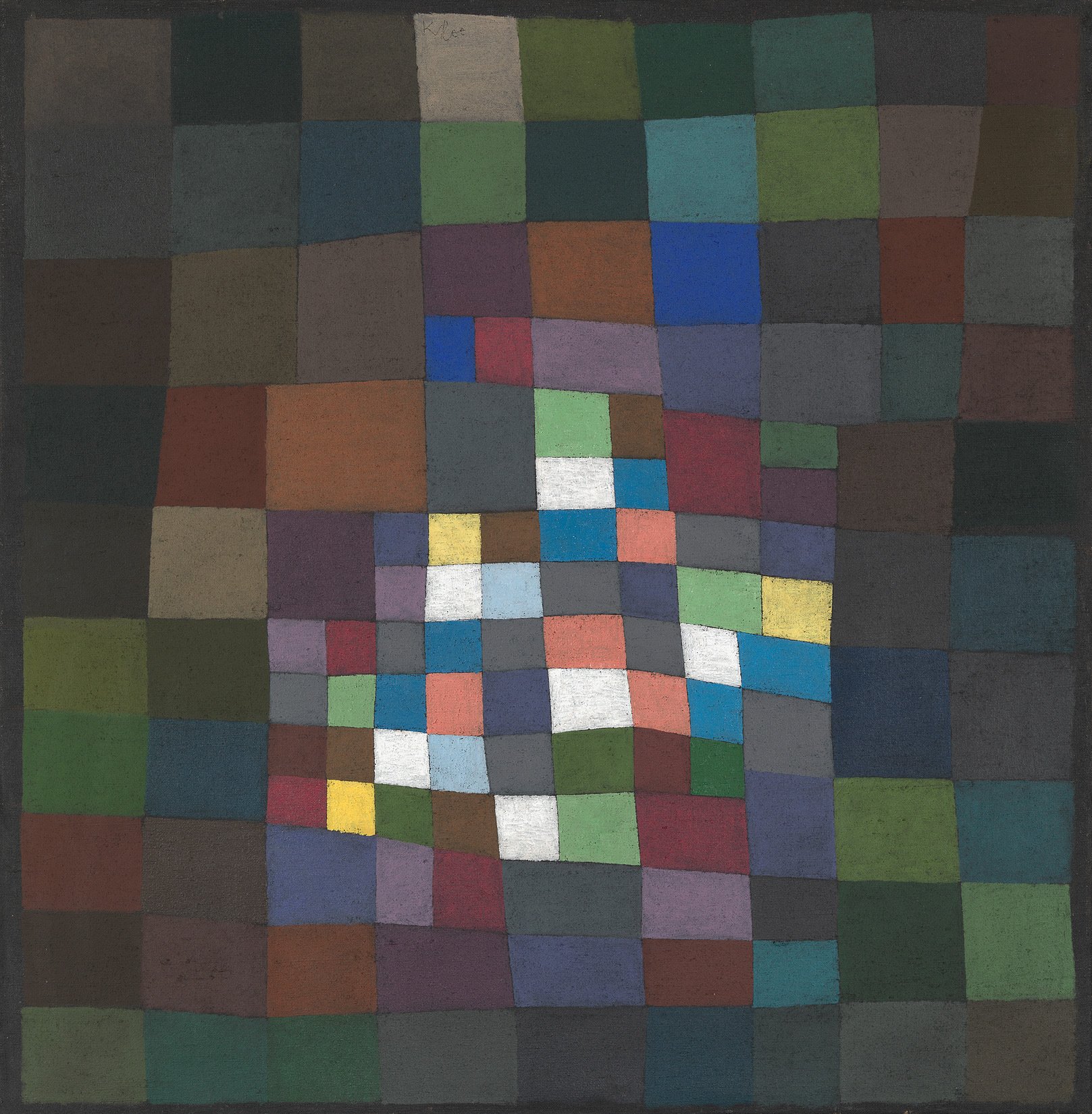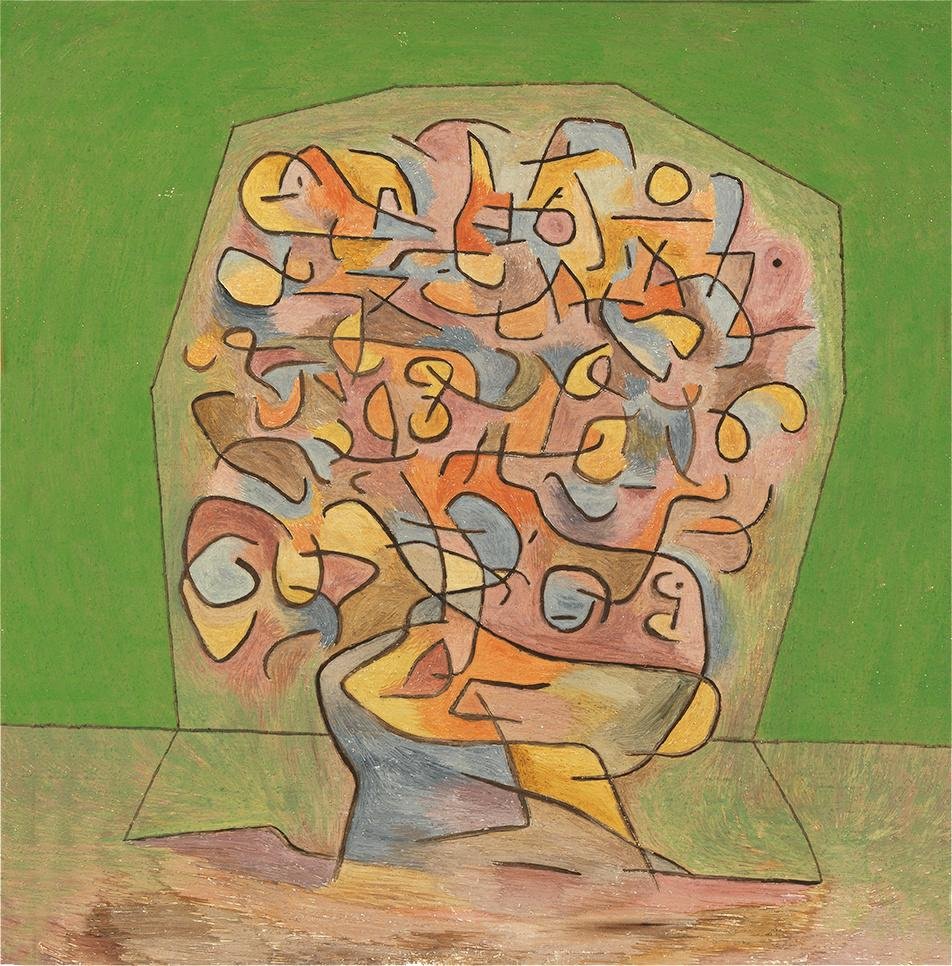Paul Klee
Flowering, 1934

Paul Klee
Flowering (recto), 1934
Kunst Museum Winterthur, Legat Dr. Emil und Clara Friedrich-Jezler, 1973
Foto: SIK-ISEA, Zürich (Philipp Hitz)
Robert Delauney’s window pictures impressed Paul Klee, but it took a long time for Klee to find his own way to incorporate this enthusiasm in his own works. In 1914 on his journey to Tunisia, he painted coloured chequered watercolours. In 1925 he created a picture composed of coloured squares. It is constructed like Flowering, but the composition is turned at a 90° angle.
In the title Klee talks of a blossoming tree and a tree such as this is portrayed on the back of our picture, which he painted in 1934 in a larger format.
This is the final formulation of the subject, both the culmination and the farewell. The picture is designed like a chessboard, but the fluid squares are not equal in size, they become larger as they move outwards. Pure colours radiate out of the black background that becomes visible as framing on the edge of the picture. The colours spread out from the centre and cover the whole picture - first radiant, then becoming paler. The picture tells of a blossoming plant, but also of the process of painting: about the activation of the pictorial surface using colour.
Flowering was painted during a difficult time. The Nazis had dismissed Klee as a teacher and he had returned to Bern. Many years before he’d written: "The more terrible this world (as it is today) the more abstract the art, while a contented world on the other hand will produce worldly art."

Paul Klee
Flowering Tree (verso), 1934
Kunst Museum Winterthur, Legat Dr. Emil und Clara Friedrich-Jezler, 1973
Foto: SIK-ISEA, Zürich (Philipp Hitz)


